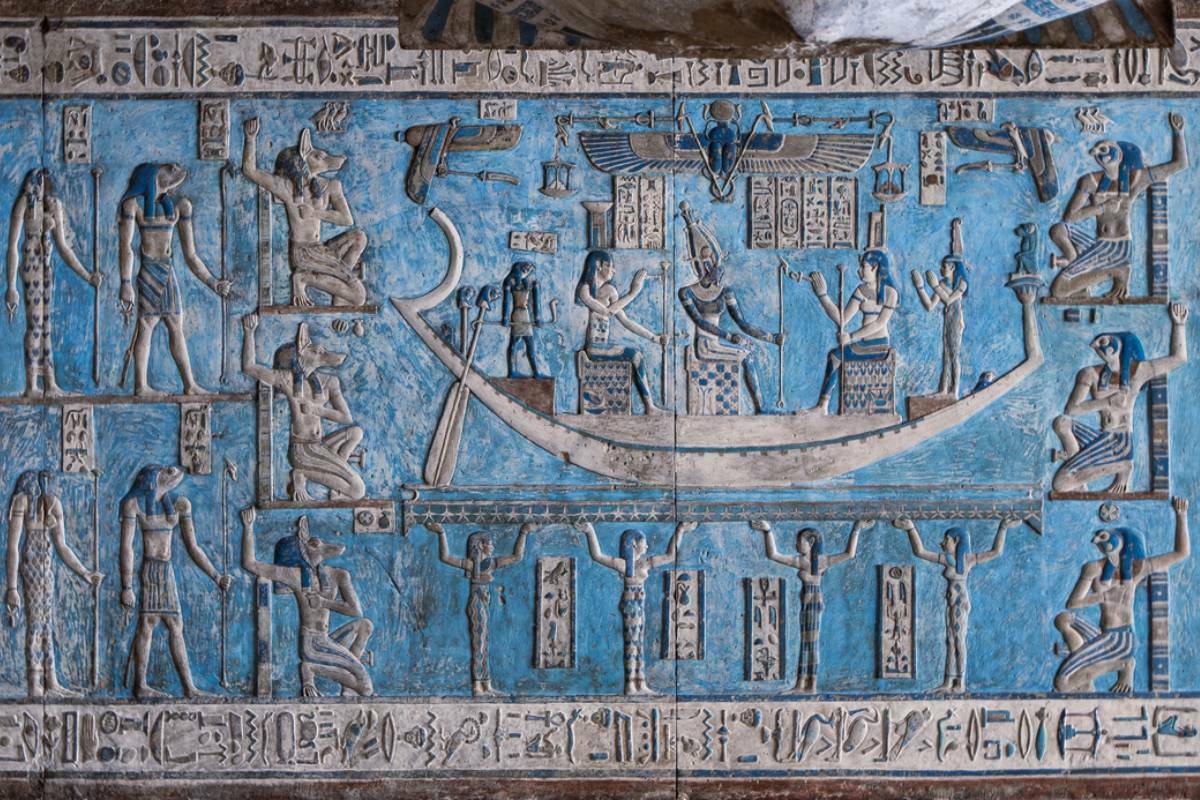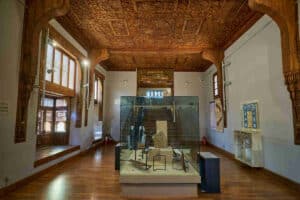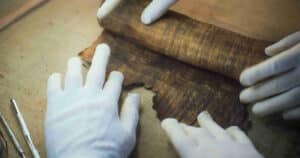The Egyptian blue is a good example of the very high technical level reached by this civilization. But do you know exactly what it is and why it is so important in the history of mankind? And do you know where you can see it with your own eyes during your trip to Egypt? In this post we give you all the keys you need to know.
What is it and why is it important Egyptian blue
The Egyptian blue is a pigment that in Ancient Egypt was used to decorate different places and objects, usually of high symbolic value. And it is important because it is considered the first synthetic color in history.
What does this mean? Very simple: faced with the scarcity, poor quality and/or high price of minerals that could naturally provide blue colored powders (azurite, lapis lazuli, cobalt), the ancient Egyptians were forced to ‘invent’ it. And they did it by mixing silica, lime, copper and an alkali, for which they had to use a really high manufacturing temperature: between 800 and 1000 ºC.
Thanks to the discovery of this pigment, the ancient Egyptians were able to use it in certain details where it was necessary, such as the face of Amun-Ra when they wanted to emphasize the role of this god as creator of the world.
It is believed that the Egyptian blue was used as early as the 4th Dynasty (around 2600 BC) and authentic workshops for the mass production of this pigment have been discovered, such as at Tell-el Amarna in the time of Akhnaton (ca. 1350 BC). In fact, it seems to have been used in the famous bust of his wife Nefertiti in the Neues Museum in Berlin.
This color was later spread and assimilated by other civilizations, such as the Romans, but over the centuries it fell into disuse and was forgotten… until its modern recovery by researchers.

Where to find this color in Egypt
There are numerous pieces with Egyptian blue The works are distributed in various museums around the world, including the British Museum in London and the Egyptian Museum in Turin. But if you wish to see it with your own eyes during your trip to Egypt, you can also do so. However, the examples that have come down to us are scarce because the passage of time has caused this pigment to disappear from most of the places where it was originally applied.
In the Egyptian Museum in Cairo there are some examples. This is the case of the sculpture of Rahotep, half-brother of the almighty pharaoh Cheops, as well as in the decoration of some of the sarcophagi exhibited here.
In Luxor there are more examples. One of the most important is documented in the Valley of the Queens. Specifically, in the tomb of Nefertari, wife of the great Ramses II, of the 19th Dynasty.
Not far from Luxor you can find one of the few temples of Ancient Egypt that still retains part of its original chromaticism: the Temple of Dendera, where this synthetic pigment was also used. Thus, the visitor can imagine the richness of colors that the Egyptian constructions had in their origin. So, if you are going to travel to Egypt with us, open your eyes wide to discover the Egyptian blue. Egyptian blue in the company of our expert guides, who will take you to discover the most interesting corners of the country.




